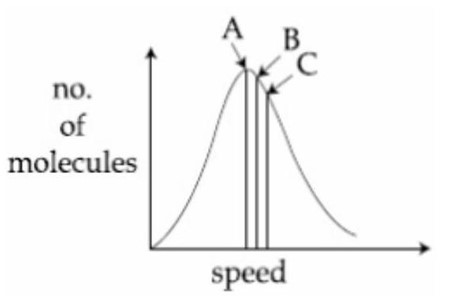Class 11th
Get insights from 8k questions on Class 11th, answered by students, alumni, and experts. You may also ask and answer any question you like about Class 11th
Follow Ask QuestionQuestions
Discussions
Active Users
Followers
New answer posted
3 months agoContributor-Level 10
Com (Conservation of Momentum)
Pi = Pf
…….(i)
&
…….(ii)
Equation (i) + (ii)
New answer posted
3 months agoContributor-Level 10
The law of gravitation holds good for any pair of bodies in the universe.
This is correct statement.
The weight of any person becomes zero when the person is at the centre of the Earth.
Weight = mg
= m * 0 [g = 0 at the centre of the Earth]
= 0
New answer posted
3 months agoContributor-Level 10
Assume both the block is moving with common acceleration 'a' then
N = mg
N = 2g
For no slipping
New answer posted
3 months agoBeginner-Level 5
You can check the below given table for the comarative differences between valence bond theory and molecular orbital theory.
| Feature | Valence Bond Theory (VBT) | Molecular Orbital Theory (MOT) |
|---|---|---|
| Basic Concept | Overlap of atomic orbitals. | Atomic orbitals combine to form molecular orbitals |
| Bond Formation | Due to head-on (? ) or sideways (? ) overlap of atomic orbitals. | Linear combination of atomic orbitals (LCAO) to form bonding and antibonding MOs. |
| Explanation of Magnetic Behavior | Often fails to explain magnetism of molecules (e.g., O? is paramagnetic). | Accurately explains paramagnetism/diamagnetism (O? is paramagnetic due to unpaired electrons in antibonding orbitals). |
| Bond Order | Not clearly defined. | Bond order = ½ (No. of bonding electrons - No. of antibonding electrons) |
| Electron Delocalization | Electrons are localized between two atoms. | Electrons may be delocalized over multiple atoms. |
| Energy Consideration | Considers only overlapping orbitals and their energy. | Considers combination and energy differences of atomic orbitals. |
| Applicability | Works well for simple molecules like H? , HF, etc. | Better for explaining molecules like O? , N? , and ions like NO? , CN? |
New answer posted
3 months agoContributor-Level 10
From the physics perspective, in uniform circular motion, speed and angular velocity are constant. That makes the angular acceleration and tangential acceleration are zero. Non-uniform motion, on the other hand, has varying speed and angular velocity, where angular acceleration is non-zero.
Taking an Exam? Selecting a College?
Get authentic answers from experts, students and alumni that you won't find anywhere else
Sign Up on ShikshaOn Shiksha, get access to
- 65k Colleges
- 1.2k Exams
- 679k Reviews
- 1800k Answers


